


Dr. D. Jayne & Son



Dr. David Jayne's "Family Medicines" began with Jayne's American Hair Dye and Jayne's Hair Tonic in 1830. Jayne's Alterative was introduced in 1851. In 1855 he joined with his sons David W. and Eben C. Jayne as well as John K. Walker to form the firm Dr. Jayne & Son. Why he did not put "Sons" in the name is not evident.
The one-cent blue, two-cent black and four-cent green private die stamps were first issued in January of 1863. The one-cent was last delivered on February 19, 1883, the two-cent on March 6 and the four-cent on February 7 of that year. Several copies exist printed in orange and red, but it is not certain these were ever put into use.
The stamps are known imperforate, perforated and die cut. Most of the perforated stamps were die cut as well, leaving only a few perforations at the tips.
7,447,200 die cut and imperf and 73,500 perforated one-cent stamps were issued on old paper, 5,712,637 die cut on silk paper and 5,102,441 die cut on pink and watermarked papers. The copy above is perforated and die cut, on old paper. The perforations can be seen at bottom and on the left side (viewer's right).
2,672,420 imperf and die cut and 13,750 perforated two-cent stamps were issued on old paper, 2,189,378 die cut on silk and 2,228,903 die cut on pink and watermarked papers. The one above is perforated and die cut on old paper.
4,710,480 imperf and die cut and 36,000 perforated four-cent stamps were issued on old paper, 3,421,013 die cut on silk and 2,728,230 die cut on pink and watermarked papers. The one above is perforated and die cut on old paper.


Card proofs of the one and four cent stamps.
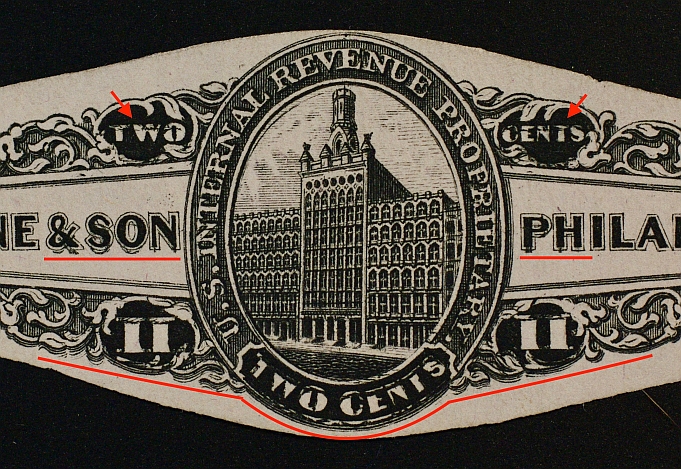
The double transfer on the two-cent die cut Jayne stamp is one of the easiest to spot with the naked eye. Heavy lines truncate the numerals "II" at their tops, and the words "two cents" at the bottom of the central oval are heavily doubled. There are other doublings as well.

A cover from Dr. Jayne & Son.
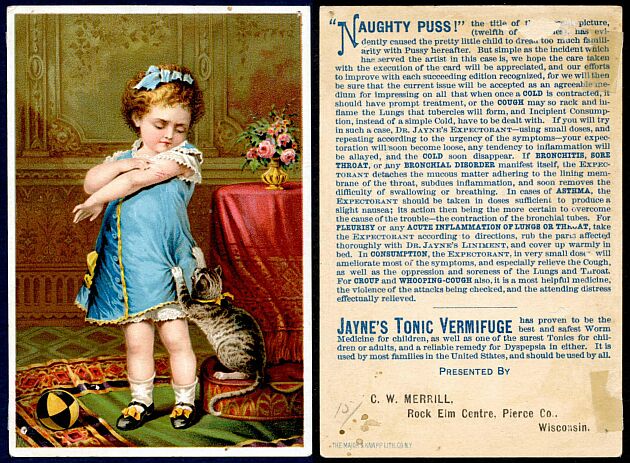
A trade card with a list of Jayne products.
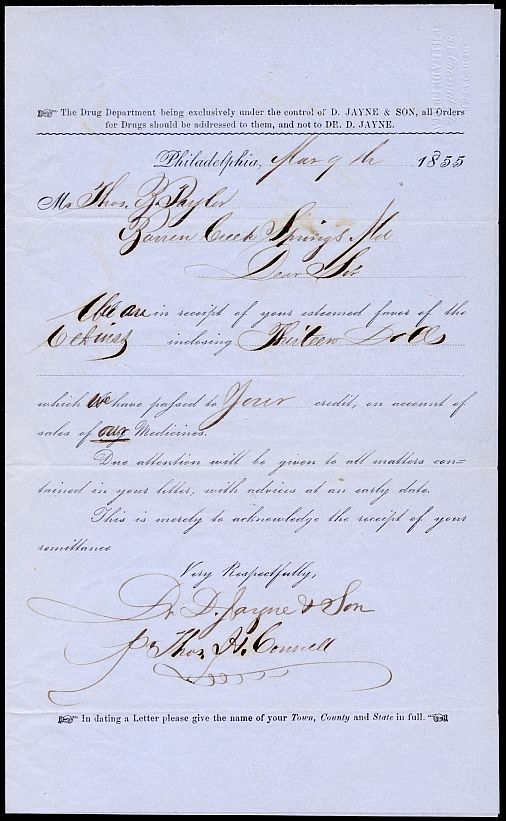
An 1855 receipt from the Jane Company. It was used very shortly after the company became Dr. Jayne & Son, and while a notice of the change was printed in the top margin, the text of the receipt still used singular pronouns, which were all changed by manuscript.
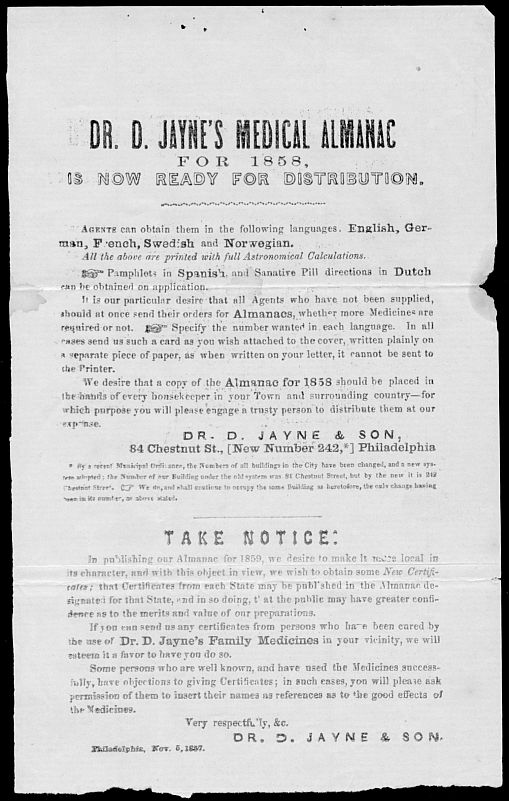
An 1857 notice that the 1858 almanac was now available. A building renumbering had taken place, and the very fine print reassured clients that the company occupied the same building as before.
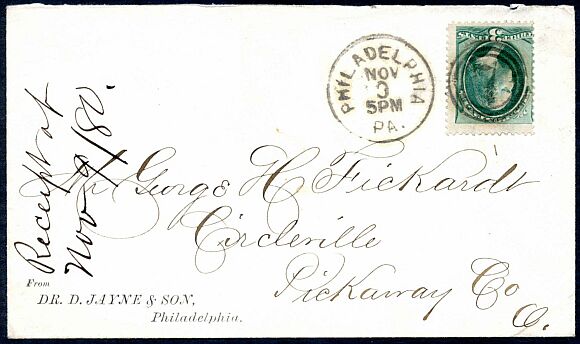
An 1880 cover from the Dr. Jayne & Son company.
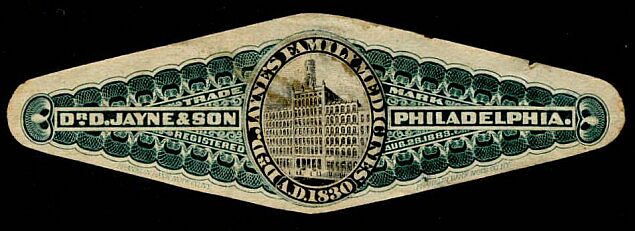
In 1883 the company had a facsimile stamp designed for use after repeal of the tax on proprietary medicines. The stamp was slightly redesigned three times. This is the original version.
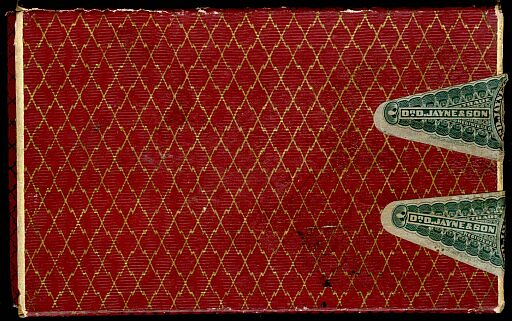
A Jayne pill box with two facsimile stamps. The stamps were torn when the box was opened, and most of what remains of them on the other side of the box is badly scuffed.
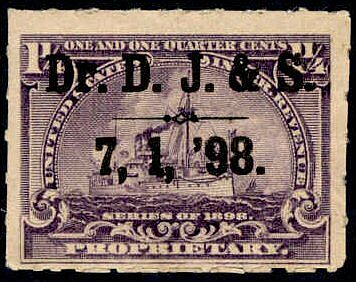
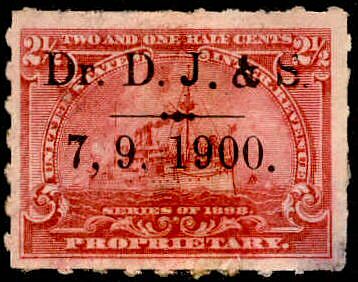
The Jayne firm did not have a private die stamp designed for their use during the Spanish American War tax period. Their cancels can be found on "battleship" proprietaries of the period.
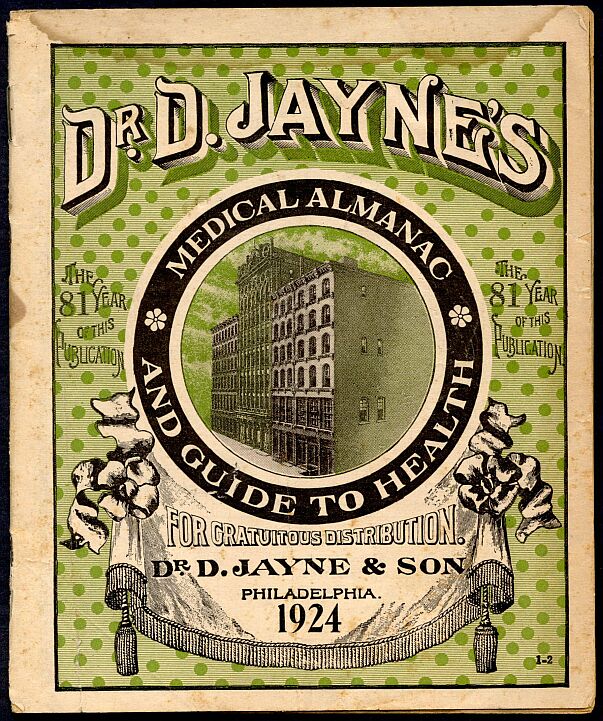
Dr. Jayne & Son survived well into the Twentieth Century, as can be seen from this almanac cover.